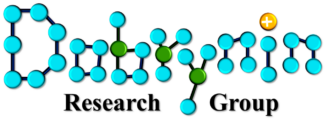Andrey V. Dobrynin and Michael Jacobs
Entanglements in polyelectrolyte solutions are a controversial issue in polymer science. Experimental studies during the last 20 years have raised doubts about the applicability of the concept of entanglements developed for neutral polymers to polyelectrolytes. To address this issue, we develop an approach based on the scaling relationship between the solution correlation length ξ = lgν/B and the number of monomers per correlation blob g for polymers with the monomer projection length l. The numerical coefficient B and exponent ν are determined by the solvent quality for the polymer backbone, chain Kuhn length, and type and strength of monomer–monomer interactions at different length scales starting from the solution correlation length down to electrostatic and thermal blob length scales. Values of the B parameters are obtained from plateaus of normalized specific viscosity ηsp(c)(cl3)α/Nw as a function of the monomer concentration c in different solution regimes of charged and neutral polymers with the weight average degree of polymerization Nw. The exponent α = 1/(1 – 3ν) describes the concentration dependence of the number of monomers per correlation blob, g ∼ cα. Knowledge of the B parameters allows calculations of crossover concentrations cD, cth, and c** into solutions of overlapping electrostatic and thermal blobs and concentrated polymer solutions, respectively. It is used for the universal representation of specific viscosity and relaxation time data in terms of the number of blobs per chain, Nw/g, which can be viewed as an effective chain degree of polymerization in polymer solutions. By applying this approach to viscosity data in the entangled solution regime, we obtain a packing number P̃e and a concentration dependence of the degree of polymerization between entanglements Ñe = P̃e2g, which include system dispersity information. This analysis shows that, in salt-free solutions of chains with degrees of polymerization of up to 104, polyelectrolytes only entangle in the solution regimes where the entanglement concentration ce > cD and solution properties are similar to those of neutral polymers. A similar conclusion is reached from analysis of viscosity data of polyelectrolytes in salt solutions. Therefore, in order to observe entanglements in polyelectrolyte solutions in a concentration range where their properties are controlled by electrostatic interactions, one has to study polyelectrolyte chains with degrees of polymerization of at least an order in magnitude longer than studied so far.

